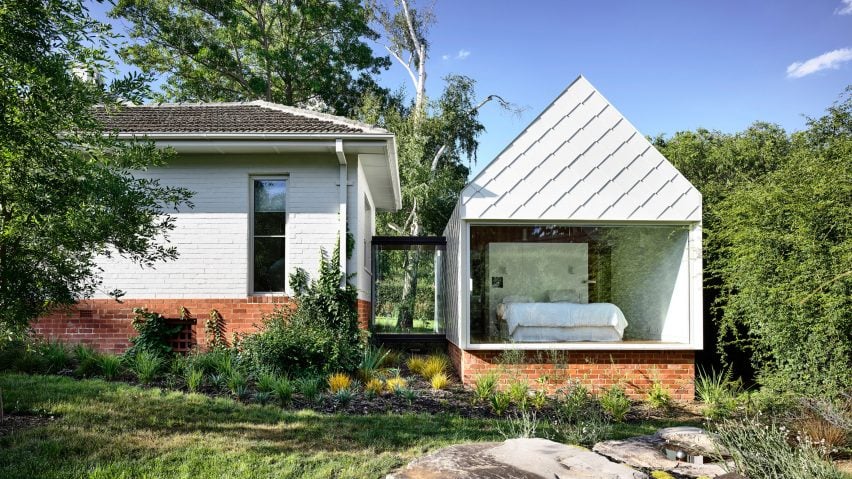
Austin Maynard Architects adds two scaly extensions to post-war bungalow in Canberra
Austin Maynard Architects has completed a pair of buildings with steel shingles in a snakeskin-style pattern, to extend a family home in Canberra, Australia.
The Empire House project sees the Melbourne-based firm renovate and extend a post-war bungalow on one of Canberra's historic ring roads.
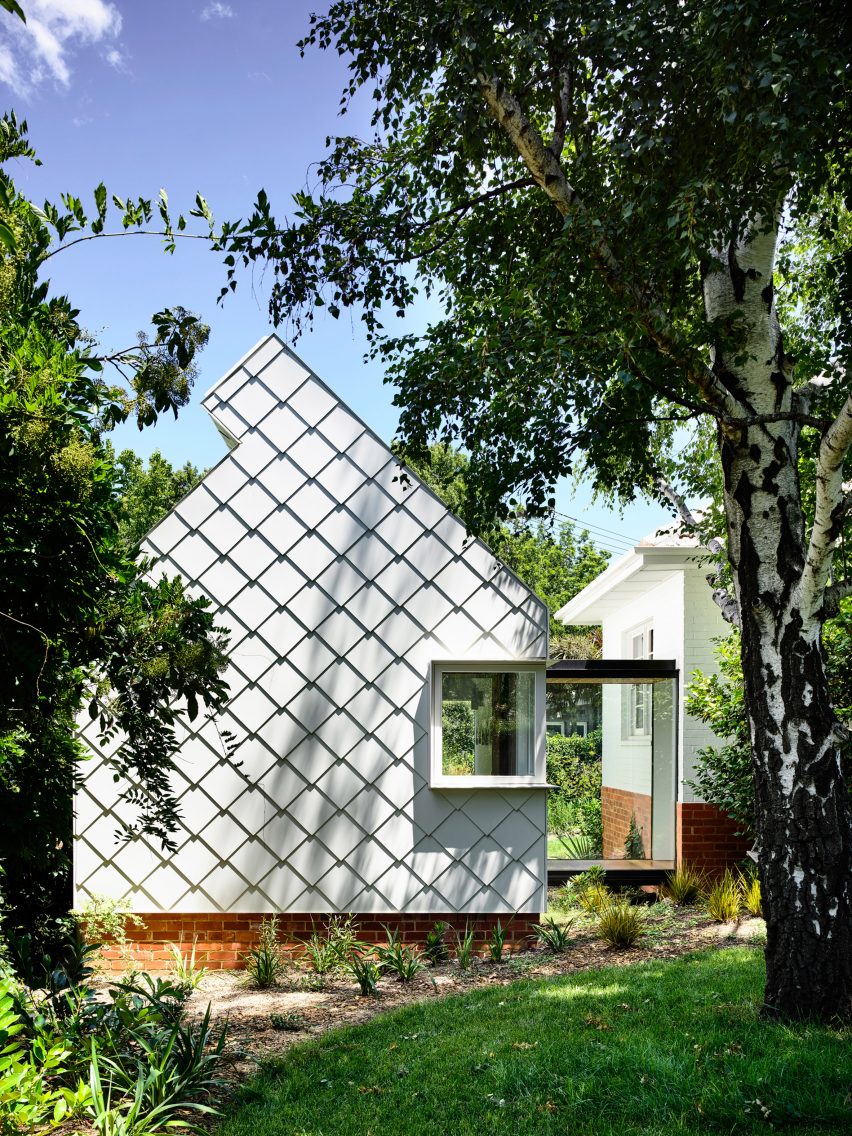
Although the easier option would have been to demolish the building and design something larger, neither the architects nor the clients – a family of three – wanted to do that.
Instead they came up with a design that respects the heritage of the building, but also adds new character.
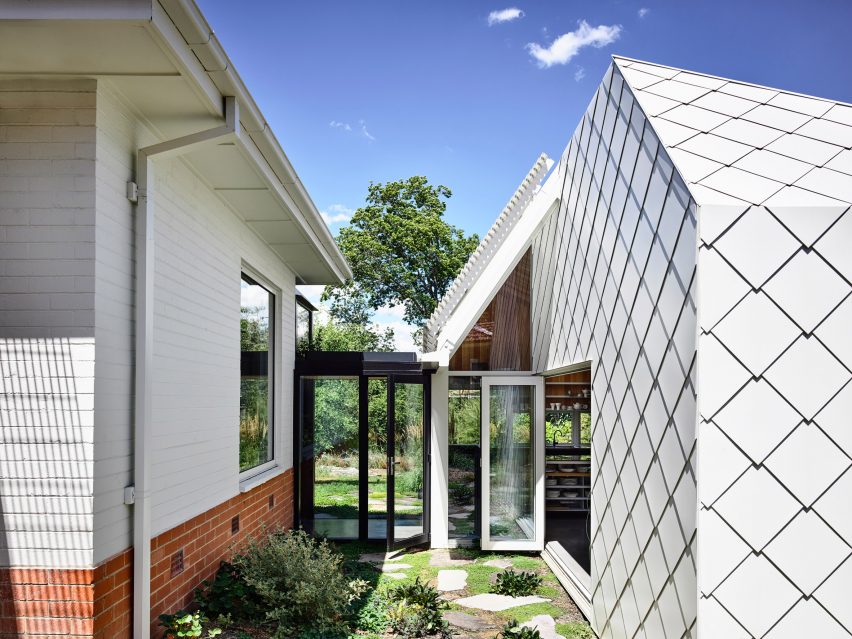
Two pavilion-sized buildings were added on the south and east sides of the house, connected by see-through glass corridors. One contains a family kitchen and dining room, while the other adds a master bedroom and en-suite bathroom.
The interior layout of the main house has been reorganised too, so that these new rooms naturally connect up with existing spaces.
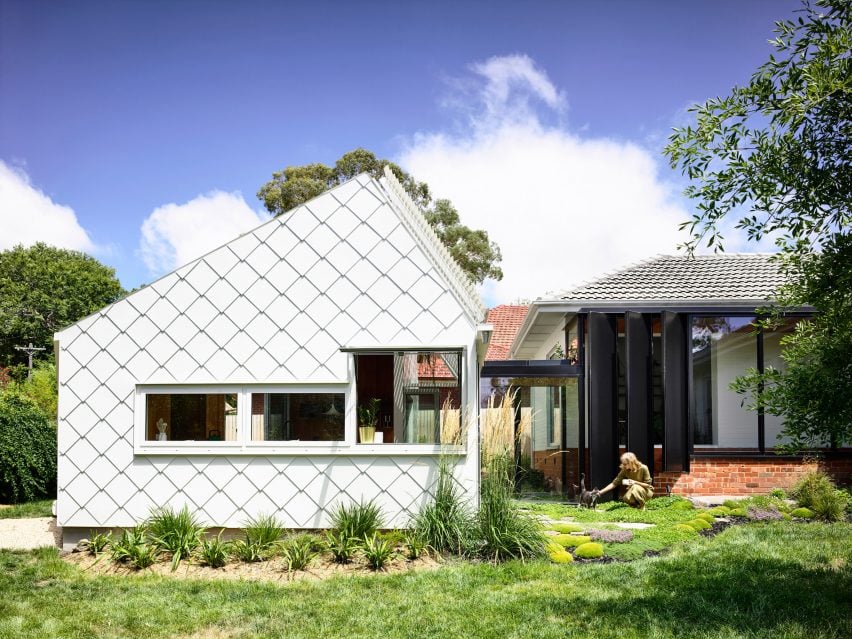
"Empire House is an exercise in considered intervention and restraint," explained Austin Maynard Architects, which is led by founding director Andrew Maynard and co-director Mark Austin.
"The two biggest issues were: how do we have a conversation with the original building without attacking it or infecting it? And how do we create sunny spaces when the sloping site levels and orientation of the house overshadows much of the garden?" said the studio.
"The answer was to go in with a scalpel, making some big moves, without damaging too much."
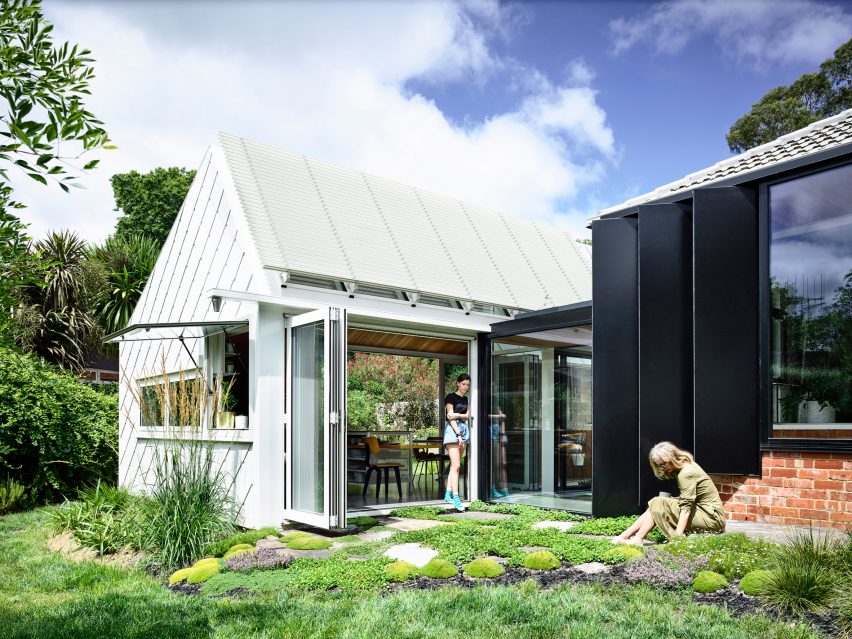
The two gable-fronted extensions are both designed to match the materiality of the existing bungalow, which had been kept in good condition.
Both old and new sit on a base of red brick. But while the upper walls of the house are white-painted brickwork, the extensions are clad in colour-matched steel shingles. Made by Colorbond, these shingles are delicately arranged in a scale-like pattern.
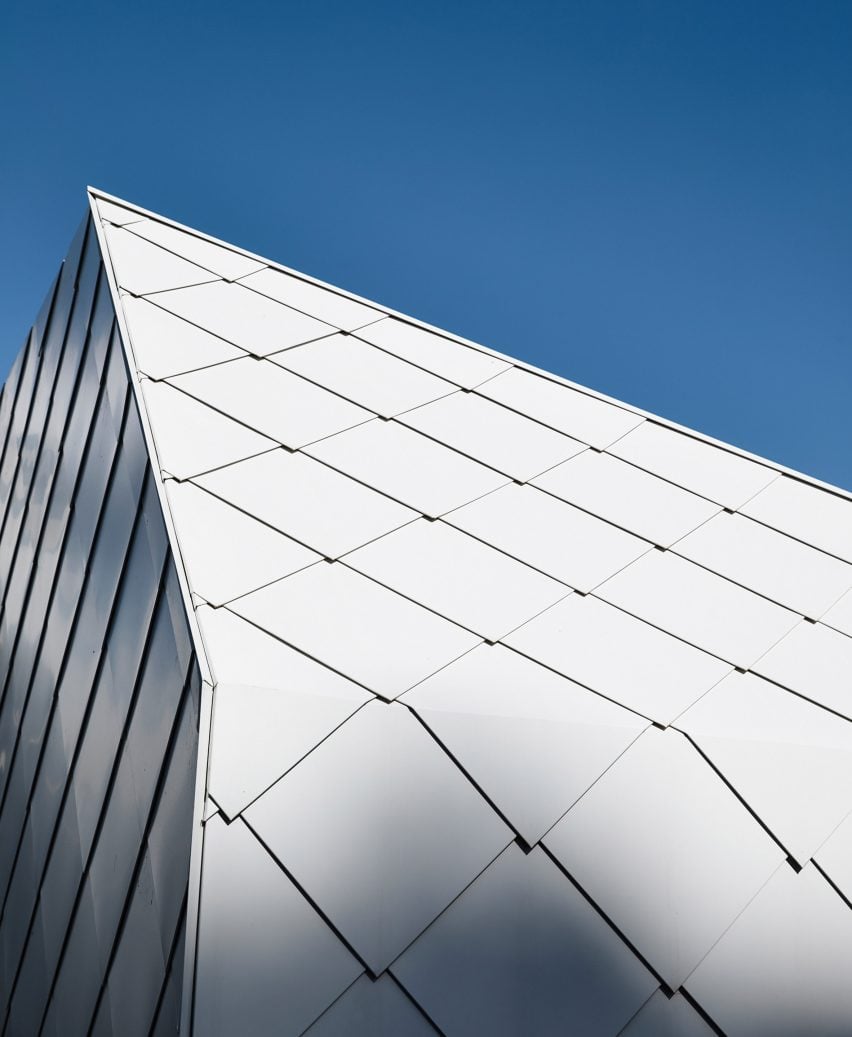
"They form a snakeskin-like covering that merges roof and wall in one surface," said the architects.
"The craftsmanship involved in the measuring, cutting and linking of each shingle is evident in the clean geometry of the arrangement," they added. "Each shingle is set out with mathematical precision."
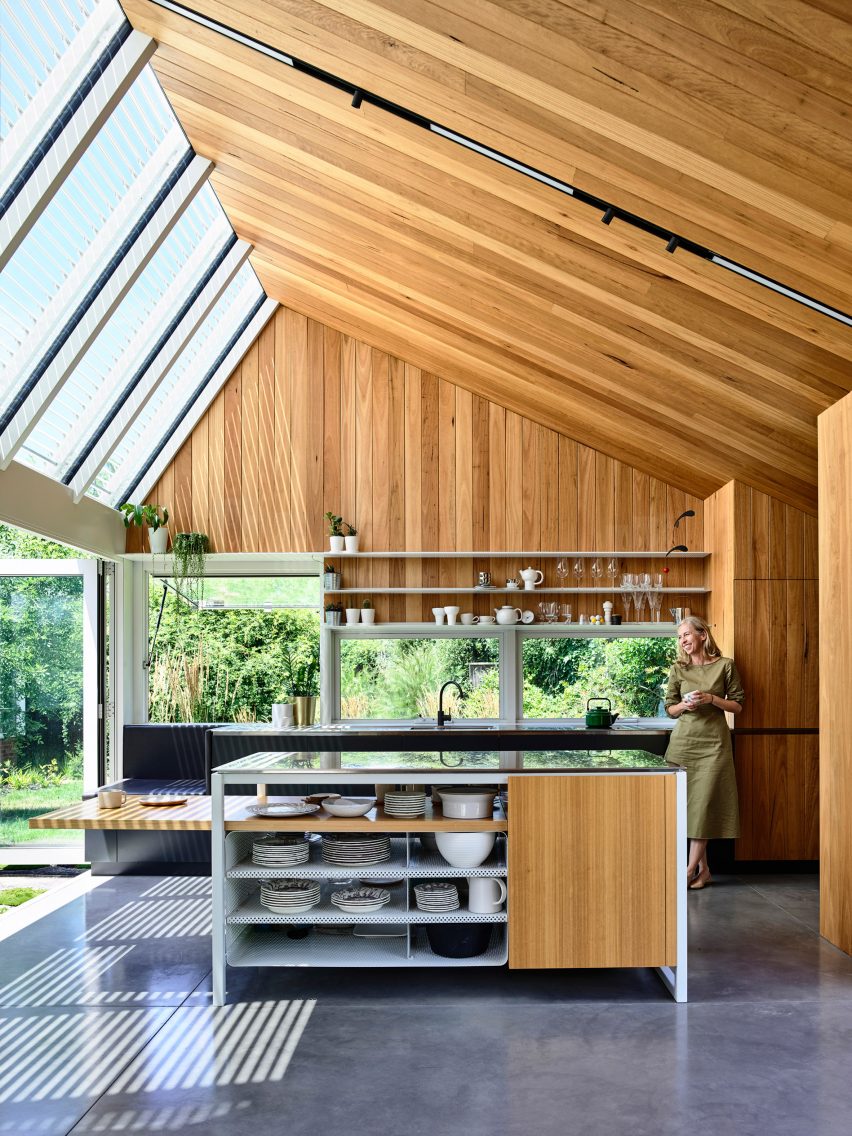
The kitchen is housed in the larger of the two additions, close to the living spaces in the main house. This block has an asymmetric roof profile that accommodates a row of north-facing skylights, ensuring the space benefits from maximum daylight.
Glass doors on both sides of the room allow the family to enjoy the breeze while cooking or dining. Other thoughtful details include a kitchen island with a cantilevered counter and a window seat built into the end of the kitchen worktop.
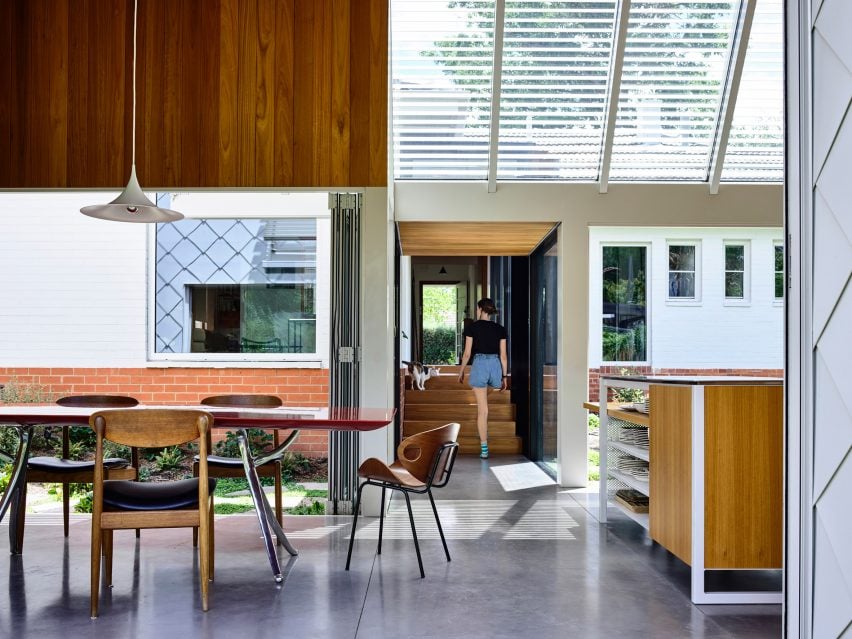
The new master bedroom is a smaller and more simple block, located alongside the three existing bedrooms. The glass corridor that links takes the form of a bridge, with the garden growing underneath it.
"The linking corridors are highly detailed to appear as transparent as possible," said the architects. "The glazing frames, cut into the brick of the old part of the house, seem to disappear."
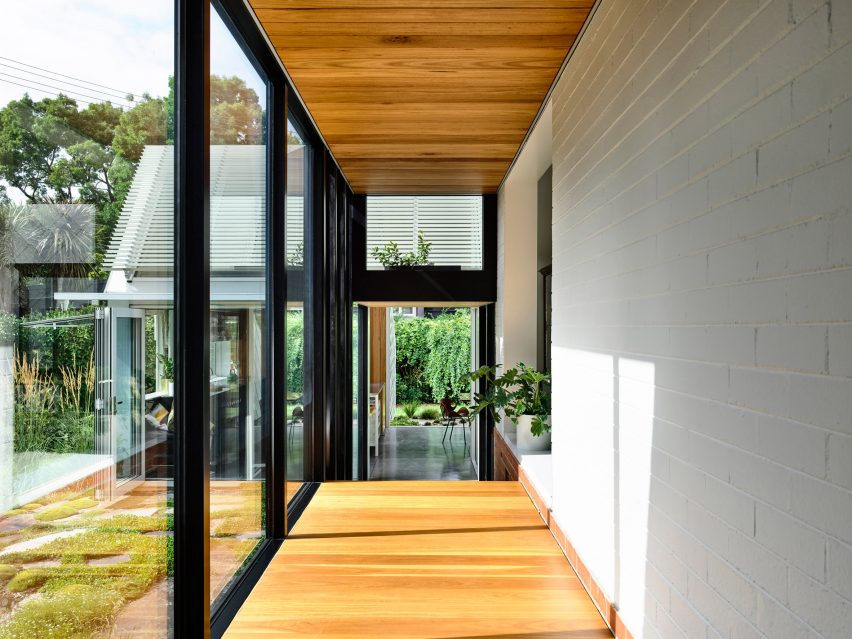
The project also involved adding a car port on the side of the house, which is designed to easily double up as a shelter for outdoor seating.
Austin Maynard Architects primarily works on residential projects, often in cases where an old building is involved. Previous projects include a renovated beach shack on Great Ocean Road and a converted stable in Melbourne.
The firm hopes this project will inspire more people to extend existing properties rather than knocking them down and starting again.
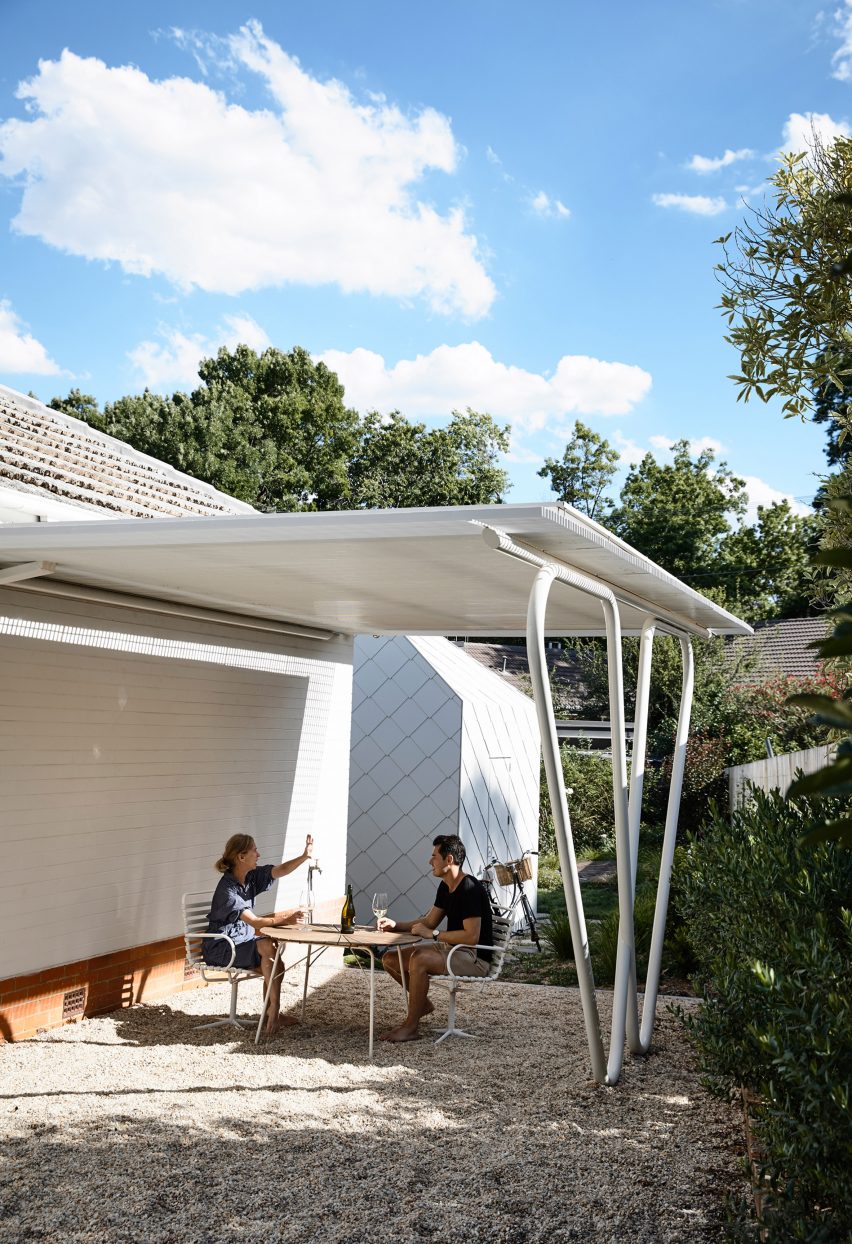
"Against the current Australian trend to build large, fast and cheaply, Empire House is a relatively small, hand-crafted home," added the studio.
"It is unapologetic in its architectural detail and craftsmanship, as this is what the area deserves."
Photography is by Derek Swalwell.
Project credits:
Architect: Austin Maynard Architects
Project team: Andrew Maynard, Mark Austin, Ray Dinh
Builder: Preferred Builders
Engineer: Ken Murtagh
Landscape architects: Bush Projects